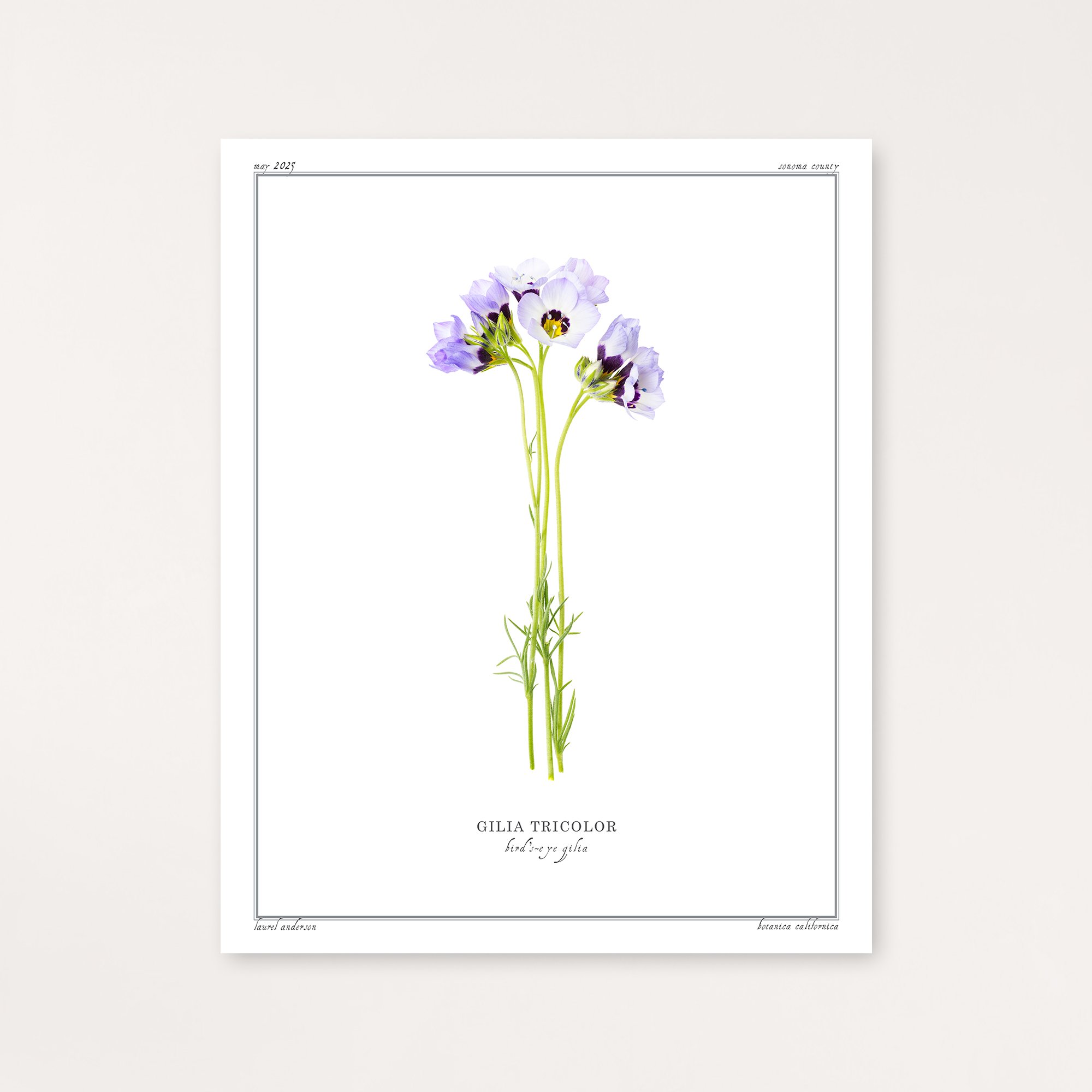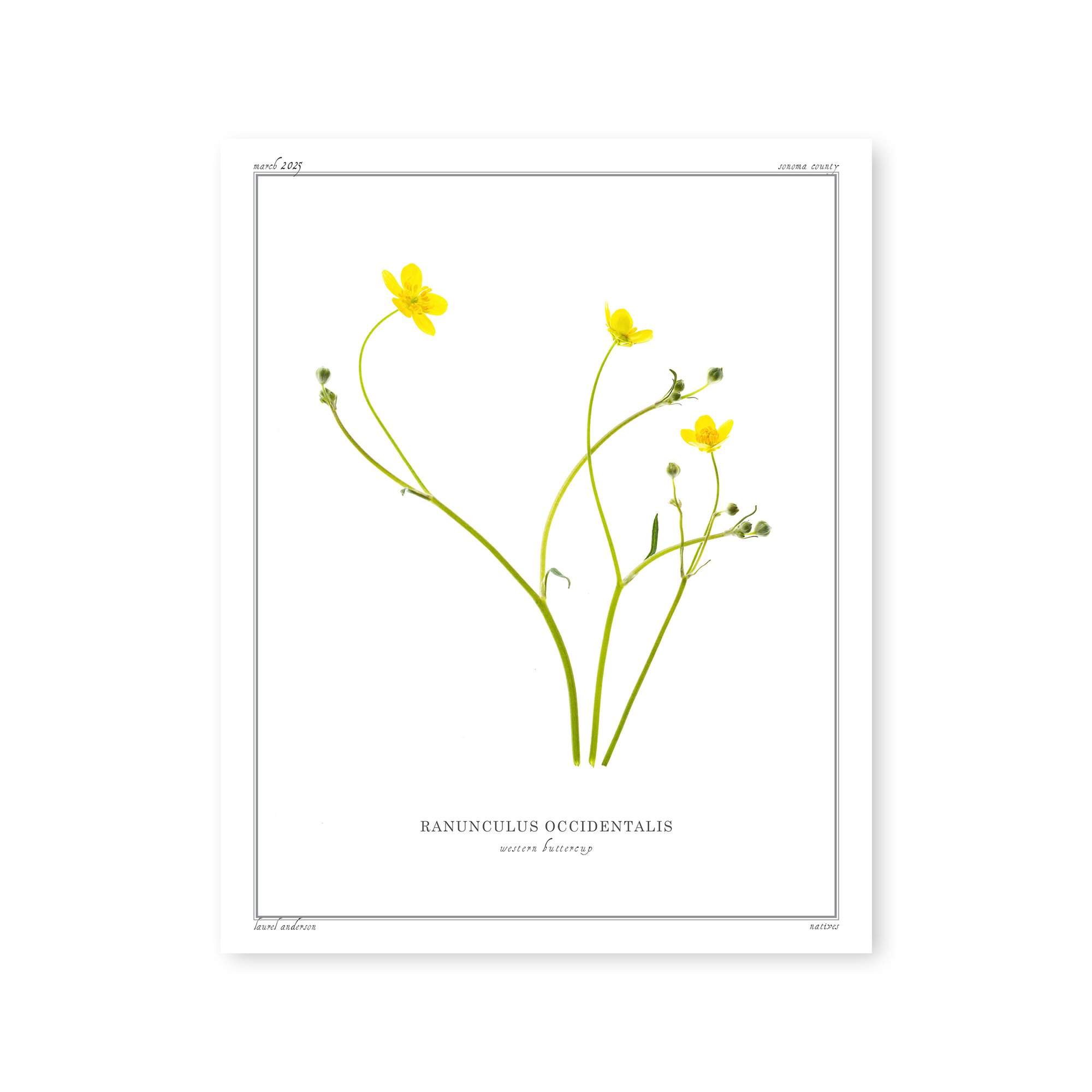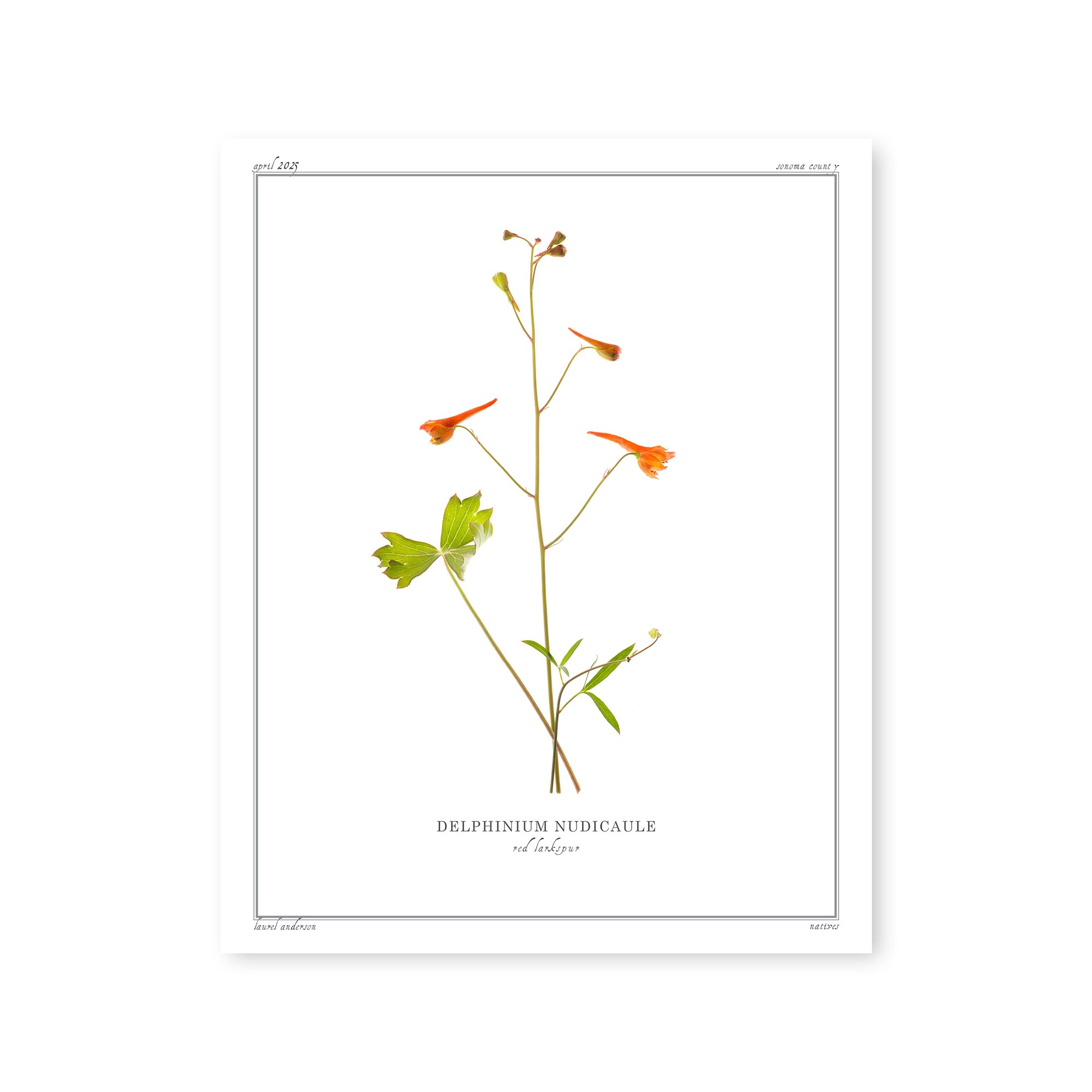 Image 1 of 2
Image 1 of 2

 Image 2 of 2
Image 2 of 2



Bird's-eye Gilia
Bird's-eye Gilia, Gilia tricolor, grows throughout California's Central Valley and foothills of the Sierra Nevada and Coast Ranges, blooming from spring through early summer.
This important pollinator plant attracts native bees, butterflies, and hummingbirds with its sweet chocolate scent and abundant nectar. The plant serves as a larval host for the spotted straw sun moth Heliothis phloxiphaga and provides essential pollen resources through its distinctive powder-blue stamens. Its long blooming period and reliable self-seeding make it a valuable component in California's spring wildflower displays.
Each print is made by the artist using archival quality pigment ink on Moab's Entrada Rag Bright 300 paper.
Bird's-eye Gilia, Gilia tricolor, grows throughout California's Central Valley and foothills of the Sierra Nevada and Coast Ranges, blooming from spring through early summer.
This important pollinator plant attracts native bees, butterflies, and hummingbirds with its sweet chocolate scent and abundant nectar. The plant serves as a larval host for the spotted straw sun moth Heliothis phloxiphaga and provides essential pollen resources through its distinctive powder-blue stamens. Its long blooming period and reliable self-seeding make it a valuable component in California's spring wildflower displays.
Each print is made by the artist using archival quality pigment ink on Moab's Entrada Rag Bright 300 paper.



















